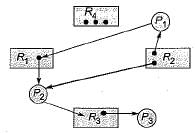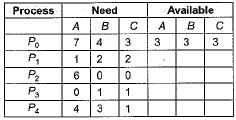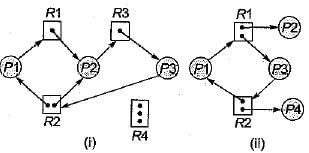Test: Deadlock- 1 - Computer Science Engineering (CSE) MCQ
14 Questions MCQ Test GATE Computer Science Engineering(CSE) 2025 Mock Test Series - Test: Deadlock- 1
An operating system contains 3 user processes each requiring 2 units of resource R. The minimum number of units of R such that no deadlock will ever occur is
| 1 Crore+ students have signed up on EduRev. Have you? Download the App |
A computer system has 6 tape drives, with 'n' processes competing for them. Each process may need 3 tape drives. The maximum value of ‘n’ for which the system is guaranteed to be deadlock free is
Consider a system having 'm' resources of the same type. These resources are shared by 3 processes A, B, C, which have peak time demands of 3, 4, 6 respectively. The minimum value of ‘m’ that ensures that deadlock will never occur is
A system has 3 processes sharing 4 resources. If each process needs a maximum of 2 units then, deadlock
'm' processes share 'n' resources of the same type. The maximum need of each process does not exceed 'n' and the sum all their maximum needs is always less than m + n. In this set up deadlock
Consider the resource allocation graph in figure
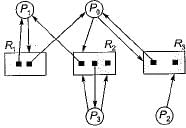
This system is in a deadlock state. This remark is
Consider:
P = { P1, P2,P3}
R = {R1, R2, R3, R4}
One instance of resource type R1 two instances of resource type R2, one instances of resource type R3 and three instances of resource type R4. The situation is P1 is holding one instance of R2 and waiting for an instance R1, P2 is holding an instance of R1 one instance of R2 and waiting for an instance of R3 and P3 is holding an instance of R3.
Match List-I with List-II select the correct answer using the codes given below the lists:
List-I
A. Inconsistency
B. Deadlock resolution
C. Deadlock avoidance
D. Transit
List-II
1. Requires the recognition of unsafe states.
2. A message received by Pj from Pi that is not shown as sent by Pi
3. A message sent by Pi to Pj (mij) that does not belong to the set of messages received by Pj
4. Always requires the abortion of one of more executing processes.
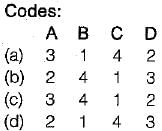
Consider the following system state:

Total resources are 11. The system will be in a safe state if
The time complexity of Banker’s algorithm to avoid deadlock having n processes and m resources is
Consider a sytem with five processes P0 through P4 and three resource types A, B, C. Resource type A has 10 instances, resource type B has 5 instances, and resource type C has 7 instances. Suppose that, at time to, the following snapshot of the system has been taken:
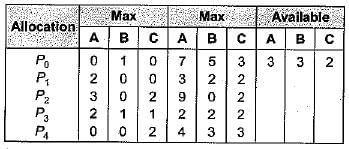
Which of the following is the safe sequence for the above system?
Consider a system with three resources, tape drive, printer and disk drive. Each one of them are assigned a unique number:
R1 = F(Printer) = 12
R2 = F (Tape Drive) = 1
R3 = F(Disk Drive) = 4
Which of the following access patterns necessarily avoids deadlock?
|
55 docs|215 tests
|
|
55 docs|215 tests
|


